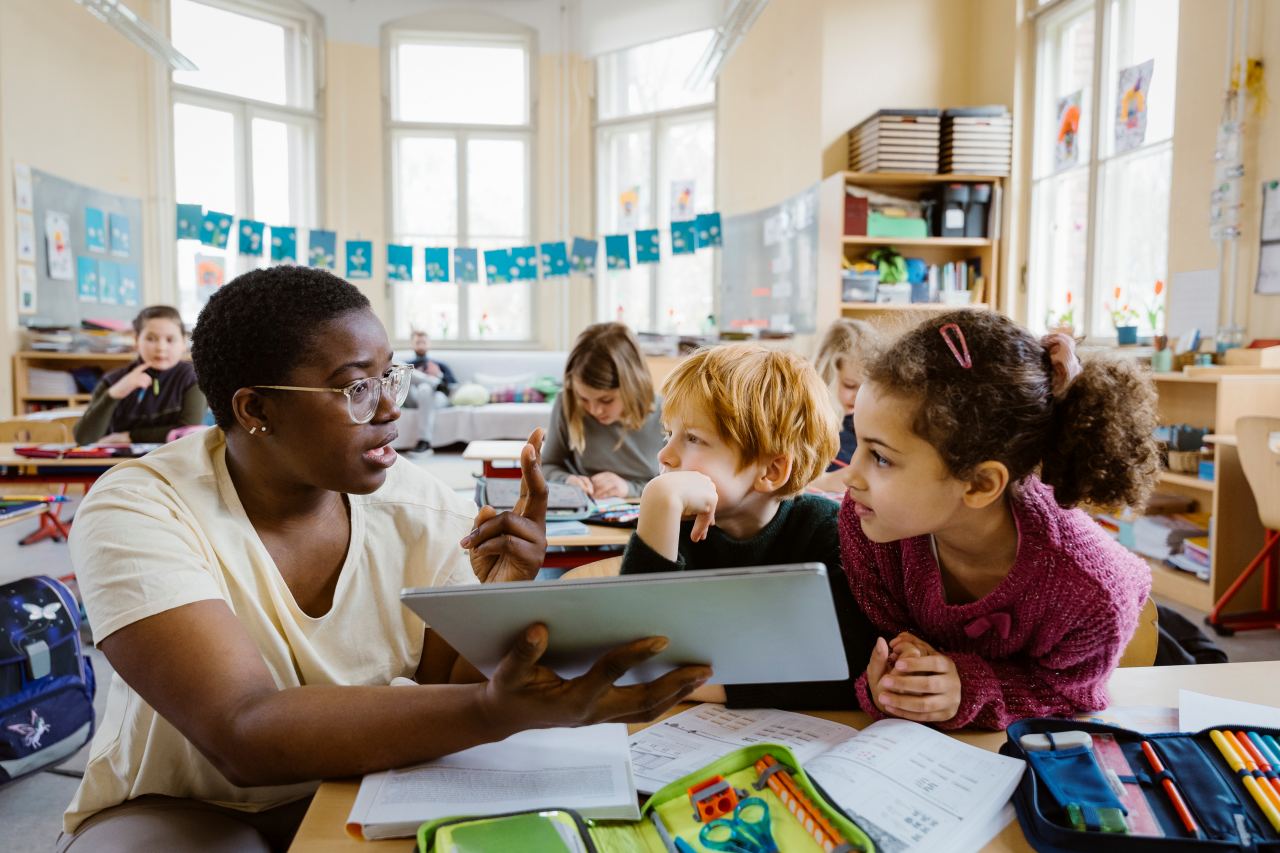Effective Primary Science Tuition Singapore for Better Exam Results
Effective Primary Science Tuition Singapore for Better Exam Results
Blog Article
A Comprehensive Overview to the Different Discovering Approaches in Primary Scientific Research Guideline
The expedition of varied discovering approaches in key scientific research instruction provides an opportunity for educators to boost student interaction and comprehension considerably. By analyzing hands-on knowing strategies, inquiry-based techniques, and joint techniques, we can identify effective techniques that satisfy numerous finding out styles. Additionally, the combination of modern technology and set apart guideline plays an essential function in cultivating an inclusive setting. The inquiry remains: exactly how can these methods be effectively implemented in the classroom to maximize their influence? The answer depends on a better examination of each strategy and its implications for teaching scientific research.

Hands-On Knowing Strategies
Hands-on knowing strategies play a crucial duty in primary scientific research instruction, involving pupils in energetic expedition and experimentation. These techniques allow students to interact directly with sensations and materials, fostering a much deeper understanding of clinical ideas. By making use of manipulatives, designs, and real-life experiments, educators develop a setting where trainees can observe, hypothesize, and examine their ideas.
Such strategies not just enhance comprehension but also grow essential thinking and analytic skills. When pupils join activities like building simple devices, planting seeds, or performing chemical responses, they are encouraged to ask inquiries and look for solutions via their very own observations. This experiential strategy helps to demystify intricate clinical principles, making them a lot more relatable and obtainable.
Furthermore, hands-on learning advertises collaboration amongst peers, as trainees commonly operate in groups to carry out experiments or share searchings for. This teamwork not just improves their understanding experience yet likewise establishes necessary social skills. Eventually, incorporating hands-on strategies in key science direction cultivates a lifelong love of knowing and interest concerning the all-natural globe, laying a strong structure for future academic pursuits in science and beyond.
Inquiry-Based Discovering
Inquiry-based learning is an instructional strategy that motivates trainees to ask inquiries, explore phenomena, and construct their very own understanding of scientific ideas. This approach shifts the focus from conventional teacher-led instruction to an extra student-centered experience, where students take the campaign in their educational journey. By fostering inquisitiveness, inquiry-based learning promotes deeper engagement with the material, allowing students to discover subjects in a meaningful context.
In method, this approach commonly includes hands-on experiments, monitorings, and crucial thinking activities that align carefully with the clinical technique. Pupils are encouraged to develop theories, style investigations, and examine data, which grows important abilities such as analytical and problem-solving reasoning. The function of the instructor in this framework is to promote exploration, assisting trainees via the inquiry process while encouraging independent idea and partnership.
Additionally, inquiry-based knowing nurtures a feeling of possession over the understanding process, encouraging pupils to go after understanding actively. This technique not only enhances understanding of scientific ideas however likewise promotes a long-lasting love for understanding, gearing up pupils with the skills essential to browse a progressively complex world.
Collaborative Knowing Approaches
Collaborative learning strategies empower pupils to participate in purposeful communications with peers, promoting a shared duty for their educational end results. In main scientific research direction, these strategies urge students to interact to check out scientific principles, fix problems, and conduct experiments (primary science tuition Singapore). By taking Click Here part in team activities, trainees can take advantage of varied perspectives, allowing for richer understanding and retention of clinical expertise
One key facet of collaborative understanding is the emphasis on communication skills. Trainees should verbalize their thoughts, pay attention actively to others, and discuss concepts, all of which are vital expertises in both real-world and scholastic contexts. This social interaction not just enhances their understanding of scientific principles but additionally promotes synergy and problem resolution abilities.
When pupils see the value of their payments within a group, they are more likely to take possession of their discovering journey. On the whole, integrating joint discovering strategies in main science instruction cultivates a dynamic understanding atmosphere that prepares pupils for future academic and social difficulties.
Innovation Assimilation in Scientific Research
The combination of innovation in key science direction boosts learning experiences by offering innovative tools and sources that sustain various training techniques, consisting of collaborative learning - primary science tuition Singapore. The usage of digital platforms, simulations, and interactive applications allows students to involve deeply with scientific ideas, promoting a more hands-on approach to understanding
Virtual research laboratories, for example, allow learners to conduct experiments securely and successfully, advertising inquiry-based understanding. These devices can mimic real-world clinical situations, permitting pupils to imagine complicated processes that would certainly be challenging to duplicate in a conventional class setting. Moreover, innovation promotes interaction and cooperation among students, as they can share searchings for and collaborate on tasks via online systems.
Furthermore, multimedia presentations and educational video clips can enhance lessons by catering to diverse discovering designs, click resources making abstract principles much more easily accessible. Information analysis devices likewise encourage pupils to accumulate and analyze clinical data, enhancing vital believing abilities. In general, the tactical consolidation of modern technology in key scientific research guideline not just enhances interaction but also prepares trainees for a highly advanced culture, furnishing them with essential skills for future scientific endeavors.
Differentiated Direction Techniques
Differentiated guideline approaches are necessary for addressing the varied demands of students in primary scientific research education and learning. These methods allow instructors to tailor their teaching approaches to suit differing capabilities, rate of interests, and finding out designs within the class. By employing differentiated guideline, instructors can create an inclusive environment that fosters involvement and improves understanding of scientific ideas.
One effective technique is to utilize versatile grouping, which allows students to team up with peers at similar skill degrees or with varying viewpoints. This technique urges peer discovering and advertises essential reasoning. Furthermore, offering selections in jobs can empower trainees, enabling them to choose tasks that resonate with their interests while still satisfying curricular goals.
In addition, integrating tiered tasks is an additional valuable technique. By making jobs with differing degrees of complexity, educators can ensure that all trainees are appropriately challenged, regardless of their efficiency. Utilizing formative analyses to evaluate recognizing more makes it possible for teachers to adjust their instructional methods dynamically, making certain that each learner obtains the assistance they need.
Eventually, applying set apart instruction approaches in key scientific research education and learning not only boosts student understanding end results however also grows an interest for science, preparing students for future scholastic searches.

Verdict
In summary, reliable primary science instruction requires a complex technique that includes hands-on learning, inquiry-based methods, and collective methods. The combination of modern technology and distinguished direction even more satisfies varied learning designs, cultivating a setting conducive to exploration and critical reasoning. By applying these techniques, instructors can boost trainee engagement and understanding, inevitably nurturing a lifelong passion for scientific research and questions. Such thorough methodologies are vital for establishing notified and curious future researchers.
The exploration of varied understanding approaches in key science guideline offers a chance for educators to boost trainee engagement and comprehension significantly.Hands-on learning strategies play an essential duty in key scientific research direction, involving students in energetic exploration and experimentation.Inquiry-based discovering is a training strategy that motivates pupils to ask inquiries, investigate phenomena, and create their own understanding of clinical concepts.Collaborative learning approaches encourage students to involve in meaningful communications with peers, fostering a common responsibility for their academic end results. In general, including collaborative knowing approaches in key science instruction cultivates a visit our website dynamic understanding setting that prepares students for future academic and social challenges.
Report this page